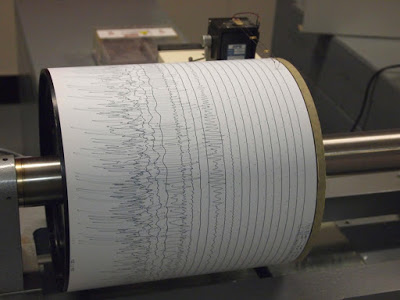
Water injected into an inactive fault can cause aseismic slip along the fault — movement without detectable earthquakes — that may then indirectly lead to micro-earthquakes. That’s the result from a controlled experiment by Yves Guglielmi and colleagues, who observed these events in real time after injecting fluid into a natural fault near an underground experimental facility in southeastern France.
Researchers are intensely interested in this type of induced seismicity, especially with a rise in earthquakes caused by injections of wastewater from gas and oil exploration. The experiment by Guglielmi and colleagues offers a better look at how friction in fluid-filled faults contributes to slip along the fault. In this case, the injected water caused very slow, four-micrometers-per-second aseismic creep on the fault before transitioning to a faster, 10-micrometers-per-second seismic slip and a series of tiny earthquakes. As Francois Cornet notes in a related Perspective article, experiments like this could guide monitoring at injection sites by potentially keeping the injection flow rate at a level that maintains aseismic slip rather than triggering earthquakes.
Reference:
“Seismicity triggered by fluid injection-induced aseismic slip,” by Y. Guglielmi; P. Henry at University of Aix-Marseille in Aix-en-Provence, France; Y. Guglielmi; P. Henry at CNRS in Aix-en-Provence, France; Y. Guglielmi; P. Henry at Institut de recherche pour le développement (IRD) in Aix-en-Provence, France; F. Cappa at University of Nice Sophia-Antipolis in Sophia-Antipolis, France; F. Cappa at CNRS in Sophia-Antipolis, France; F. Cappa at Institut de recherche pour le développement (IRD) in Sophia-Antipolis, France; F. Cappa at Côte d’Azur Observatory in Sophia-Antipolis, France; F. Cappa; J.-P. Avouac at California Institute of Technology in Pasadena, CA; D. Elsworth at Pennsylvania State University in University Park, PA; J.-P. Avouac at University of Cambridge in Cambridge, UK. DOI: 10.1126/science.aab0476
Note : The above story is based on materials provided by American Association for the Advancement of Science.










